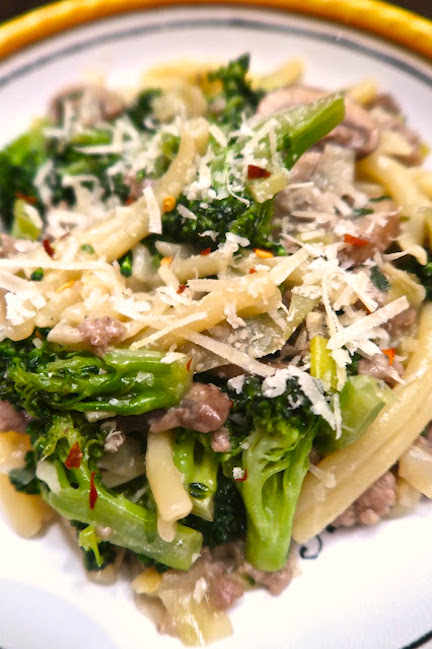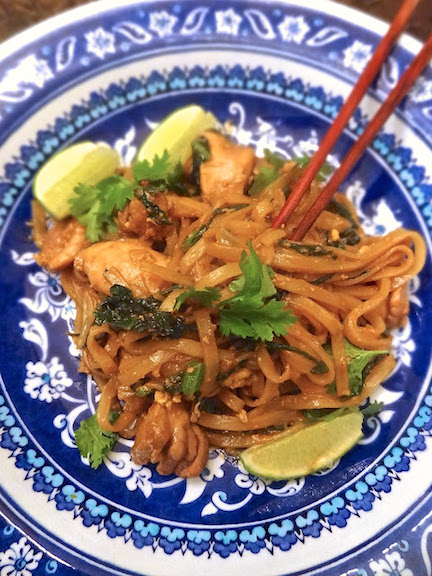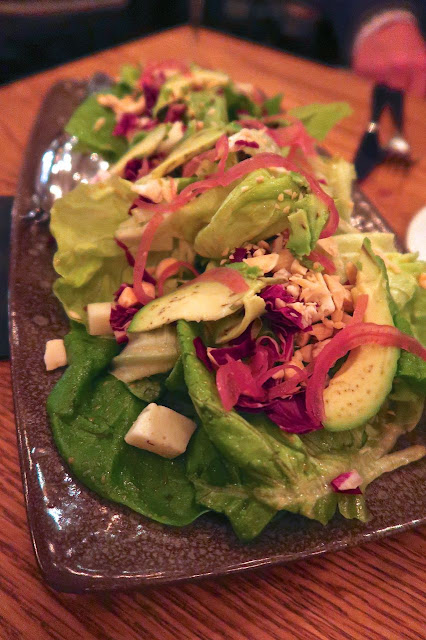Monday, November 29, 2021
Braised Oxtail with Creamy Mashed Potato
Friday, November 26, 2021
Roasted Acorn Squash with Butter & Brown Sugar
2 tbsp butter
1/4 cup loosely packed brown sugar
Preheat the oven to 400°F. Slice the acorn squash into half, and using a sturdy metal spoon, scrape out the seeds and stringy bits inside each squash half, until the inside is smooth. Add a tablespoon of butter on the inside of each half and sprinkle brown sugar over the butter. Place the squash halves cut side up in a roasting pan. Pour 1/4 inch of water over the bottom of the pan so that the squash doesn't burn or get dried out in the oven. Bake at 400°F for about 1 hour, until the tops of the squash halves are nicely browned and the squash flesh is very soft and cooked through. Serve immediately.
Wednesday, November 24, 2021
Sicilian Casarecce con Broccoli e Salsiccia
Monday, November 22, 2021
Split Pea & Ham Hock Soup: A Winter Warmer
Serves 6
1/4 cup olive oil
1 large onion, finely diced
2 celery stalks, finely diced
2 carrots, finely diced
2 1/2 cups split green peas
1 1/2 lb smoked ham hock
8 cups chicken stock
4 sprigs fresh thyme
3 bay leaves
Salt and freshly ground black pepper
Garnish:
1 cup sour cream, crème fraiche or greek yoghurt
6 sprigs fresh parsley
In a large saucepan, sauté the onion, celery and carrots over medium-high heat for about 5 minutes, until the onion is softened but not browned. Add the peas, ham hock, thyme and bay leaves and cover with stock. Bring to a boil, then reduce the heat and cook gently for one hour.
After the stock has cooked trough, discard the thyme and bay leaves, but reserve the ham hoc in a large bowl. Meanwhile, process the soup in a blender or food processor, and pulse until smooth, then return to a clean pan — I like to use a hand immersion blender so the soup can be made in one pot. Once the ham hock has cooled, pull the meat off the bone and shred into small pieces. Add the ham to the soup and heat through gently, seasoning to taste with salt and pepper.
To serve, garnish with dollop of sour cream, crème fraiche or greek yoghurt, and finish with a sprig of fresh parsley.
Friday, November 19, 2021
Grilled Lamb & Beef Kefta with Tahini & Pomegranates
Wednesday, November 17, 2021
Grilled Black Tiger Shrimp with Chopped Scallions
Monday, November 15, 2021
Stir Fried Soy Sauce Noodles with Chicken & Gai Lan
Friday, November 12, 2021
Crème Caramel: Rich, Smooth & Decadently Delicious
Wednesday, November 10, 2021
Lemon & Ricotta Pancakes with Fresh Blueberries
Monday, November 8, 2021
Thai King Prawn Curry in Spicy Coconut Milk
Friday, November 5, 2021
Cauliflower Cheese with Luscious Cheddar Béchamel
Wednesday, November 3, 2021
Moroccan Grilled Beef Kefta with Tahini Sauce
Monday, November 1, 2021
Patria: Classic Spanish Cuisine on King West
Seafood is a staple of Spanish cuisine, and Patria on King Street West showcases an ever-changing selection of only the freshest fish, octopus and shrimp, sourced daily. The extensive menu also features authentic Spanish dishes such as delicately prepared crispy Croquetas de Setas made with porcini mushrooms, manchego cheese and truffle aioli and imported jamón ibérico, from Spain’s highly-prized acorn-fed black-hoofed pigs right through to traditional Paellas by Australian chef Stuart Cameron. The stylish interior features high ceilings, exposed brickwork and a spectacular mixed media two-story mural of a flamenco dancer, mounted behind a hand stitched screen by Canadian artist Laura Carwardine. Another King West restaurant collaboration by dining and nightlife impresarios Charles Khabouth and Hanif Harji, this one serving Spanish food, Patria opened in October 2012 offering a taste of regional Spain.
Arriving for dinner on a Thursday evening, the restaurant was absolutely full, with tables being occupied as soon as they were vacated. It was the first night Patria was open to full capacity, and boy, the place was humming. With ever guest required to show proof of vaccination and ID, and every server wearing masks, it nevertheless felt like life was sliding back to normal. With his natural warmth and good humour, our server Brent was thrilled to be back working full time and made our evening even more special.
Beginning with a glass or two of Cava and bowl of Marcona almonds, we began to sample the menu starting with a plate of acorn fed Iberian Chorizo de Bellota followed by a wonderful Ensalada de Aguacate with butter lettuce, avocado, marinated red onion, goat cheese, quince dressing and Marcona almonds. The Croquetas de Setas with porcini mushrooms, Manchego cheese and truffle aioli melted in our mouth, and the Sautéed Wild Shrimp with garlic and parsley sauce sweet were sweet and delicious. With an enviable wine list with with a hit list of Spanish greats, we ordered an elegant Hacienda de Arinzano Tempranillo from from Navarra, which we enjoyed with the Paella Patria that featured Argentinian shrimp, PEI mussels, fish, peas, clams and saffron. Finishing with a slice of Basque Cheesecake and glass of Amontillado, a dry Spanish sherry, our evening at Patria marked the first night it felt good to be out on the town.

Serves 4
Recipe courtesy of chef Stuart Cameron































